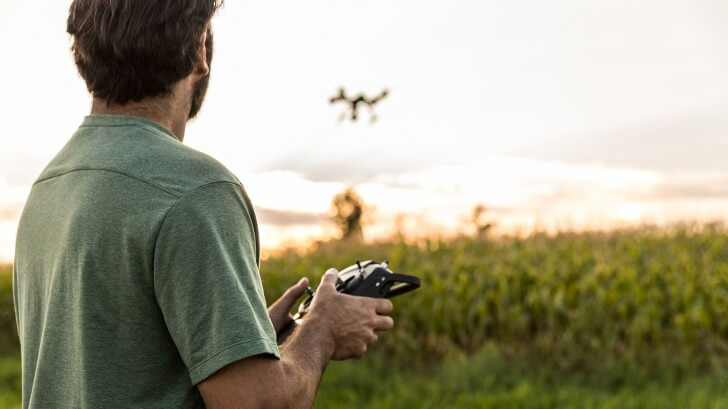

BBC Earth Podcast
Close your eyes and open your ears
Intimate stories and surprising truths about nature, science and the human experience in a podcast the size of the planet.
People
How biology is influencing technology to help us better understand nature.
What do you get if you cross a gannet with a squid? No, not a squannet (nice as that sounds), but an AquaMAV and Dr Sophie Armanini, research associate at the aerial robotics laboratory of Imperial College London, has made one.
Armanini’s department specialises in bio-inspired robotics, using nature as a basis for creating robotic solutions. For example, the gannet-squid mash-up came as a result of needing a robot that could provide aerial aquatics locomotion – basically the ability to transition between air and water with equal power in both elements. Armanini’s department combined the way a gannet folds its wing underwater, allowing it to hit the water and then continue its downward momentum at speed, with the way a squid propels itself along using a water jet, to give the robot enough energy to rocket out of the water again. The result was the AquaMAV, or Aqua Micro Aerial Vehicle.

Nature is your logical first step. The first people who looked at flight, looked at birds.”
As Armanini points out, the good thing about taking ideas from nature is that you’re benefiting from millions of years of evolution. “Nature is your logical first step,” she says. “The first people who looked at flight, looked at birds.”
It’s not just about movement, though. Robots need to conserve energy without draining their batteries just as animals need to remain protected and conserve energy while being poised to spring into action. Birds use complex methods of perching, as do spiders, staying in the optimum position for hours at a time by building a web and remaining there. The robotic result was the SpiderMAV drone, which shoots out an anchor carrying a thread and flies around creating a tensile structure. It then attaches itself to the structure and once secure, powers off and waits until needed.

Our thoughts around AI and robots can sometimes be tainted by dystopian views of the future, but Armanini’s vision is much more positive; useful robots doing jobs for us that are either too time consuming or too dangerous for humans to do. Robots could collect samples, take photographs and videos, do research tasks, assemble scaffolding, monitor machinery wear and tear or get into spaces (ie underground) that would be hazardous for humans. One of Armanini’s current projects is using robots to construct buildings loosely inspired by nest building behaviour in birds. A swarm of robots could work together, for example, to use whatever appropriate materials are to hand to build shelters after a disaster.
Some of the resistance to AI and robotics comes from the language we use and its association with menacing sci-fi. “An army of tiny robots” sounds frankly terrifying, but “a flock of helpful micro-robots” has a much less sinister tone. Whether we‘re apprehensive or not, robotics are going to be a part of our everyday life and there is something comforting in knowing that this new technology will emerge in the guise of familiar creatures. Maybe domestic robots will be the new pets, and in 2030 the internet will be full of pictures of rodent killer robots wearing funny hats. You heard it here first.
Featured image © Mr Kitsadakron Pongha | EyeEm | Getty


Intimate stories and surprising truths about nature, science and the human experience in a podcast the size of the planet.